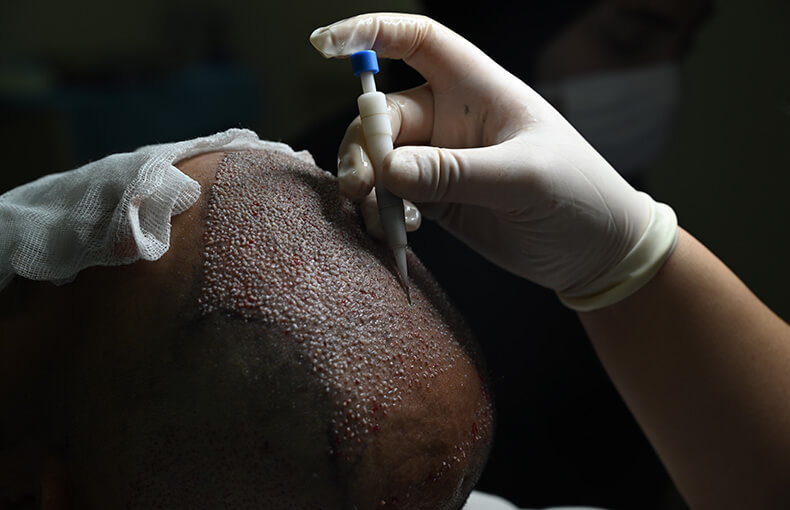
How To Know If Your Hair Loss Is Something To Get Checked Out
To know whether you should go to the doctor to have them check out your hair, you need to have noticed one thing before anything else: hair loss. Losing hair, in general, is normal. Hair follicles go through shedding cycles during which they lose and regrow hair. According to the American Academy of Dermatology Association, it is normal to shed from 50 to 100 hairs a day.
Furthermore, not only is some hair loss normal as we age, but men, in particular, are prone to suffering from a condition called male pattern hair loss. The causes for this are often genetic and hormonal, meaning there’s little you could do to prevent its occurrence, but some hair loss might have different pathological causes. Either way, going to the doctor, even if only for aesthetic reasons, might be a good idea to see if you might qualify for a hair transplant surgery. Hair transplant surgery needs to be done when hair loss is not too advanced. The surgery requires that follicles be grafted from one hair-dense region of the scalp to one with less hair density. This latter region is often the problematic region addressed by the surgery.
So what are the signs of hair loss and how do you recognize them?
For you to have noticed hair loss, you should have seen at least one of the following:
-a visible receding hairline. You can notice a receding hairline when the hair around the temples thins and falls off, leaving your hairline looking like the letter M. In very advanced cases, the hair on the crown of your head completely falls off, leaving you with a horseshoe-shaped hairline.
-Rapid and sudden hair shedding. If you notice that you’re leaving a lot of hair on your pillow, in your hairbrush, or shower drain, you might be witnessing hair loss. Indeed, rapid hair loss might be one of the best reasons to see a doctor, as rapid hair loss may be pathological in origin.
Overall, the most important benefit of seeing a doctor is that you can gain clarity on the reason for your hair loss. Armed with this knowledge, you can then plan your next steps. As written above, many hair issues can cause permanent follicular damage. After the follicle has been irreversibly damaged, the only solution to hair loss is hair transplant surgery.
What could the signs mean?
Below are some of the possible diagnoses you can receive. While some, like male pattern baldness, are common and relatively harmless, others like autoimmune hair loss can indicate other underlying health issues. It is best to see a doctor to have these issues addressed.
- Male pattern hair loss: male pattern hair loss is a genetic and hormonal condition in which a man’s hairline thins and recedes. The effects are quite noticeable and permanent. Male pattern hair loss first appears around the temples and moves back. It can also affect the hair on the crown of the head. Because the effects are permanent, it is good to check this out as soon as possible.
- Telogen effluvium: Hair loss often occurs due to illness, trauma, stress, or nutritional deficiency. It can happen, for example, to patients undergoing chemotherapy. People working in high-stress environments for long periods of time with little sleep can also be particularly prone to this type of hair loss. If you’ve noticed hair loss, going to the doctor to check it out might let you know if you have an underlying medical or nutritional issue.
- Autoimmune hair loss: Similar to telogen effluvium in some cases, autoimmune hair loss occurs when your immune system attacks your own hair follicles. This condition is strongly linked to genetic predisposition. Individuals with asthma, hay fever, thyroid disease, and Down syndrome also show greater susceptibility to this type of hair loss.
- Fungal infections: Certain fungal infections, like scalp ringworm, attack the hair follicles and can lead to hair loss. In some cases, the damage can be permanent. For this reason, it is wise to consult with a doctor to receive a diagnosis as early as possible and risk permanent hair loss.
- Traction alopecia: This is a type of hair loss caused by pulling tension on the hair follicles as a result of tight hairstyles or headwear. For example, people who style their hair into cornrows or tight buns can speed up the onset of hair loss.
The above are only some of the possible causes of hair loss. Your doctor is the individual best equipped to let you know if any of these causes your hair loss. Don’t hesitate to contact your physicians and surgeons at Care4Hair, who will help you pinpoint your hair restoration options.




















